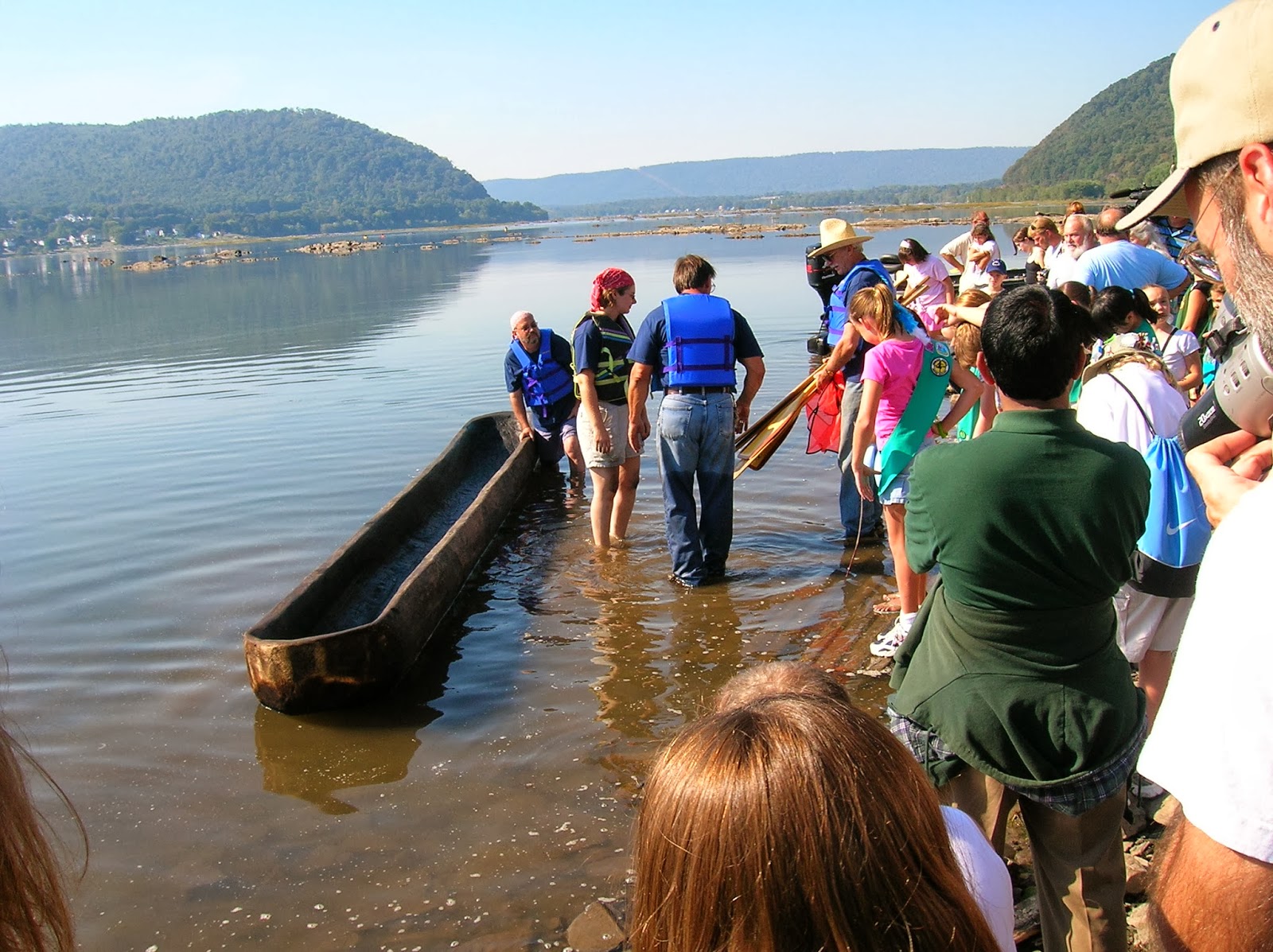The
staff of the Section of Archaeology at the State Museum of Pennsylvania just completed
a very busy week at the 2014 Pennsylvania Farm Show. In spite of the
temperatures plummeting to minus 2 degrees on one day, we estimated that
approximately 43,548 people visited our exhibit where we distributed over
15,000 archaeology brochures, posters, tattoos, free planetarium passes and
magazines.
Our principal goal at the Farm Show is to share highlights of
Pennsylvania archaeology with the citizens of the Commonwealth. We also strive
to promote the preservation of archaeological sites in our state so that future
generations can benefit from these valuable resources. We think our goal was
reasonably well achieved and we are beginning to plan next year’s theme and reflect
on how we can improve. Presently, we are considering an exhibit on the
Paleoindian/Early Archaic Period and climate change but we are open to
suggestions.
For
this week’s blog, we are keeping it simple and conducting a general history of
the Section of Archaeology’s Farm Show public outreach program. As best as
anyone can remember, State Archaeologist, Dr. Barry Kent initiated the first
archaeology exhibit at the Farm Show in 1981. Our first exhibit was simply a
display of interesting artifacts, mostly from Native American contexts. Two
people from the Section of Archaeology worked at the exhibit from 9:00 am. until
9:00 pm. six days straight! The exhibit area was situated in a dusty area just
off the main arena.
After a few years, the exhibit was moved to the Family Living
area and our theme was changed from simply displaying artifacts to making an
effort to record archaeological sites. It was felt that many farmers attending
the Farm Show had collections of artifacts and these could be recorded with the
Pennsylvania Archaeological Site Survey (PASS). Although the effort continued
for several years, it proved to be impractical due to mapping issues and was
discontinued.
During those early years, the exhibit space was small (10X20
feet) but was used to present a variety of themes such as prehistoric farming,
projectile point typology and the use of tobacco by Native Americans. In one
especially popular exhibit, the problematic artifacts from an excavation at
Brandywine Battlefield, Delaware County, were exhibited and the farming
community had fun identifying some of the pieces for us since we were unsure of
their functions. Unfortunately, by the late 1980’s staffing and funding at the
State Museum had been significantly reduced thereby ending the Farm Show public
outreach program in 1991.
At the
same time, another agency within the Pennsylvania Historical and Museum
Commission, the Bureau for Historic Preservation (BHP), began expanding its
public outreach program in 1991 and initiated “Archaeology Week” as a means to
promote the preservation and protection of archaeological resources. This
concept was part of a national program organized by the Department of Interior
and continues in most states today. The archaeology poster series was started
at this time along with an essay contest for middle school students.
The BHP
conducted a field program at the Central Builders site in Northumberland County
to celebrate Archaeology Week in 1992 and 1993 (Archaeology Week was expanded
to Archaeology Month in 1996). In 1994, the BHP initiated an alternative
mitigation project on City Island involving the Corps of Engineers and the City
of Harrisburg. As an integral part of this project, which lasted until 2004,
several experimental archaeology projects were initiated such as Native
American flint knapping methods, horticulture, pottery making, house
construction and making the dugout canoe.
1997 dugout canoe in foreground and remains of second attempt in background
The
first dugout was made in 1997. It was inspired by the discovery of the Curtis
Pond dugout in Wayne County and the discovery of a cache of axe and adze
performs on City Island. The first dugout was narrow, had thin side walls,
compared to our present dugout. A second dugout was attempted in 1998. This was
larger but unfortunately burned in half on its last day of construction. The
third dugout was made in 1999 and was very large with thicker side walls. It
measured three feet wide and 24 feet long. It was this dugout that made the voyage from
Harrisburg down the Susquehanna River to Havre de Grace, Maryland.
1999 dugout off the shore of City Island, Harrisburg
The first
three dugouts were made using copies of 17th century metal axes and fire.
In 2003, the BHP re-instituted the Farm Show public outreach program and the
exhibit included this dugout. Unfortunately, dugout #3 suffered from dry rot
and was replaced by our current craft in 2005.
launch of the 2005 dugout
Once the log was cut in half
length wise, the most recent version was made exclusively using Indian
technology i.e. stone adzes and burning with fire. The public is very impressed
with this 20 foot dugout and it continues to be an attraction at the Farm Show.
It has been described as a “kid magnet”. It truly attracts children and allows our
staff and volunteers to speak to their parents concerning the preservation of
archaeological sites and encourages them to visit the State Museum.
Take a journey with us this week in Pennsylvania
archaeology as we showcase some of the photos over the years
of our public outreach efforts. If you haven't seen us out and about in central
PA, please consider visiting us at one of our programs conducted throughout
the year so you can join us in embracing our archaeological past!
Farm Show 2004
Farm Show 2005
Farm Show 2006
Farm Show 2007
Farm Show 2008
Farm Show 2010
Farm Show 2012
Farm Show 2012
Farm Show 2013
Farm Show 2014
Next week we will return to the archaeology of
Pennsylvania by county.
For more information, visit PAarchaeology.state.pa.us or the Hall of Anthropology and Archaeology at The State Museum of Pennsylvania .













No comments:
Post a Comment